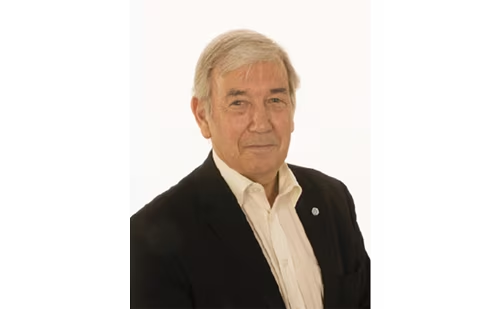The definition of chronic obstructive pulmonary disease (COPD) has recently been reformulated better to encompass the heterogeneous nature of this lung condition.1 The new definition is broader, includes risk factors other than smoking, and aims to improve the diagnosis, management and clinical trials of a disorder with high morbidity and mortality rates.1
In this expert interview, MeiLan K Han and Alvar Agustí discuss the Global Initiative for Chronic Obstructive Lung Disease (GOLD) 2023 executive report, which proposes a new definition for COPD and covers the latest updates in its diagnosis, management, and prevention.2
Q. Could you please give us a brief overview of the definition of chronic obstructive pulmonary disease proposed by the Global Initiative for Chronic Obstructive Lung Disease (GOLD) 2023 report?
The GOLD 2023 report proposes a new definition focusing only on the characteristics of chronic obstructive pulmonary disease. Previous definitions included factors such as whether this disease was frequent, preventable and treatable. This definition was correct years ago when awareness of the disease needed to be raised; however, the GOLD 2023 report now believes that it is better to separate the definition of the disease from its causes, risk factors or epidemiological impact, as these are different things. Therefore, the current definition of COPD focuses on the characteristics that define the disease.3
Q. What risk factors are associated with the development of chronic obstructive pulmonary disease?
Traditionally, COPD has been understood solely as a self-inflicted disease caused by tobacco smoking. While tobacco smoking is known to be an important risk factor for COPD, it is no longer considered the only one. Approximately one-third of patients with COPD worldwide are not smokers; therefore, there have to be other causative factors besides smoking.4 This is not to say that smoking is not important; it is an extremely important risk factor for COPD. However, there are other factors to consider, for example, exposure to environmental factors. These play an important role, particularly in low- and middle-income countries. For instance, cooking inside a poorly ventilated home with biomass is a risk factor for COPD. Moreover, exposure to some infections, such as tuberculosis, can also contribute to developing COPD.4
Over the past 10 years, it has been noted that abnormal lung development during pregnancy, infancy or adolescence leads to the lungs not reaching full potential in terms of lung function at the age of 20–25 in men and 16–18 in women, which is when individuals without COPD reach peak lung function.1,5 This abnormal lung development observed increases the risk for COPD later in adulthood. Abnormal lung development has various causes: mother smoking during pregnancy, repeated infections in infancy, allergies, or poor diet or nutrition.2 Many events occurring before 25 years can limit lung development and increase the risk for COPD later in life. In summary, smoking is an important risk factor, but many other factors must be considered beyond smoking.
Q. Please could you describe the clinical presentation of chronic obstructive pulmonary disease and its associated comorbidities?
In the last 10 years, it has been discovered that there are different ways of developing COPD. The traditional one is that a patient who is in their sixties or seventies presents to a clinician complaining of breathlessness, cough and sputum production; this is what we call chronic bronchitis. This is often associated, almost invariably, with multimorbidity, including cardiovascular complications, metabolic syndrome, bone problems, psychiatric disorders, anxiety, depression and diabetes, which are many factors in the traditional presentation. However, now we know that there may be abnormalities in lung development, which means patients are at a higher risk of developing COPD at a much younger age. It is not that COPD in the young does not exist; it is that clinicians do not actively look for it and do not diagnose it properly. It is also true that, in these younger patients with COPD, the clinical presentation may be slightly different, and there may be fewer symptoms and comorbidities already present at a lower intensity. There are several ways in which a patient with COPD can present, and these different ways are heavily influenced by the age of the patient.
Q. Why is chronic obstructive pulmonary disease often underdiagnosed, and what impact could early intervention have on patient outcomes?
It is indisputable that COPD is hugely underdiagnosed; consequently, COPD is also significantly undertreated. For instance, a recent epidemiological study on the prevalence of COPD in patients 40 years or older among the general population of Spain found that almost 80% of individuals with COPD were not diagnosed and, therefore, not treated.6 There are potential explanations for this situation. Patients who smoke may minimize their symptoms, as they are aware that if they seek help from the doctor, they will be told to stop smoking, and they do not want to do this. Other individuals may adapt their lifestyle to minimize their symptoms; for example, if a patient is experiencing breathlessness, they may stop partaking in sports. Certainly, from the clinician’s point of view, spirometry is not being used as often as it should for patients with risk factors. All factors mentioned, such as smoking, early life events or being born prematurely, are risk factors.
What would happen if we diagnosed COPD earlier, rather than when patients are 45–68 years of age? Unfortunately, there are no data from the literature to answer this question, as studies have not been performed with a younger population yet. The mean age of patients with COPD in any clinical trial worldwide is about 65 years of age. At present, there is a strong move towards performing studies in younger individuals as it is possible that the same treatments available now may be much more effective if they are used at an early stage of the disease; however, we do not have the evidence for this yet. There is hope that data on younger participants will be available in the next few years.
Q. What factors need to be considered when diagnosing chronic obstructive pulmonary disease, and what controversies surround forced spirometry?
Forced spirometry should be much simpler, and pulmonologists have made it complex. Current recommendations indicate that spirometry is performed with three manoeuvres that do not divert much between each other. This is followed by a bronchodilator test, where the technician provides a bronchodilator, waits for 15–20 minutes, and then repeats the three manoeuvres. The whole process takes 45 minutes, which is a significant amount of time. On the other hand, spirometry is cheap, reproducible and non-invasive. It not only informs on the presence of a respiratory problem but also identifies a group of individuals at high risk for comorbidities. Overall, perhaps the field should move towards a simplified way of performing spirometry. If the patient can only blow one normal manoeuvre, it is very unlikely that the patient has COPD. Therefore, spirometry should be used in a much simpler way to screen people, particularly those with risk factors such as smoking.
Q. How does the Global Initiative for Chronic Obstructive Lung Disease ABE assessment tool differ from Global Initiative for Chronic Obstructive Lung Disease ABCD, and what are the recommendations for initiating pharmacological therapy in groups A, B and E?
The primary group that was removed was Group C, which previously was defined by low symptoms but frequent exacerbations. In both talking to clinicians in practice and examining data from large cohorts, such as COPDGene, we discovered that this group of patients is not very common.7 Hence, the feedback received from clinicians is that they welcome the simplification to Group E, which encompasses patients at high risk for exacerbations, regardless of symptoms. The initial treatment recommendation for Group A (low symptoms, low exacerbation risk) is a bronchodilator; for Group B (high symptoms, low exacerbation risk), it is dual, long-acting bronchodilator therapy; and for Group E (high exacerbation risk, regardless of symptoms), the primary recommendation is also dual, long-acting bronchodilator therapy, but with consideration for triple therapy if the blood eosinophil count is >300 cells/µL.
Q. What are the recommendations for follow-up treatment for both dyspnoea and exacerbations?
If a patient with dyspnoea is on a single bronchodilator, switching to dual bronchodilator therapy is recommended.2,3 If this is unsuccessful, the clinician can consider switching inhaler devices or molecules and investigating other causes of dyspnoea. If a patient with exacerbations and an eosinophil count of <300 cells/µL is on a single bronchodilator, they should be stepped up to dual bronchodilator therapy. If the exacerbations persist and the eosinophil count is >100 cells/µL, escalation to triple therapy is recommended. For patients with an eosinophil count of <100 cells/µL on dual bronchodilator therapy or those on triple therapy still experiencing exacerbations, either roflumilast (a phosphodiesterase-4 inhibitor with bronchodilator and anti‐inflammatory effects) or azithromycin (an antibiotic) can be considered as additional therapies. For patients with an eosinophil count of >300 cells/µL on mono-bronchodilator therapy, directly escalating to triple therapy can be considered.
Q. When should treatment with inhaled corticosteroids be considered?
Patients with an eosinophil count of >100 cells/µL with frequent exacerbations are the most likely to benefit from inhaled corticosteroids.8
Q. Which non-pharmacological therapies are associated with the management of chronic obstructive pulmonary disease?
Smoking cessation is still a key part of the non-pharmacological management of COPD. Pulmonary rehabilitation improves symptoms, exercise capacity and may also reduce the risk of hospitalization and mortality. Long-term oxygen therapy, non-invasive positive pressure ventilation and lung volume reduction (medical or surgical) may also be important options for patients with advanced disease.
Q. Could you please describe the exacerbations of chronic obstructive pulmonary disease and how they can be classified and managed?
The GOLD 2023 report adopted the consensus Rome proposal that defines an exacerbation of COPD as “an event characterized by dyspnea and/or cough and sputum that worsen over ≤14 days, which may be accompanied by tachypnea and/or tachycardia and is often associated with increased local and systemic inflammation caused by airway infection, pollution, or other insult to the airways”.1 Short-acting, inhaled beta-2 agonists, with or without short-acting anticholinergics, are still recommended as initial bronchodilators for acute treatment, while long-acting bronchodilators are still continued. Systemic glucocorticoids, at a dose of 40 mg prednisone-equivalent per day for 5 days, are recommended. Antibiotics are recommended for patients with increased sputum volume and purulence and those requiring non-invasive or invasive mechanical ventilation, with treatment length being 5–7 days.







